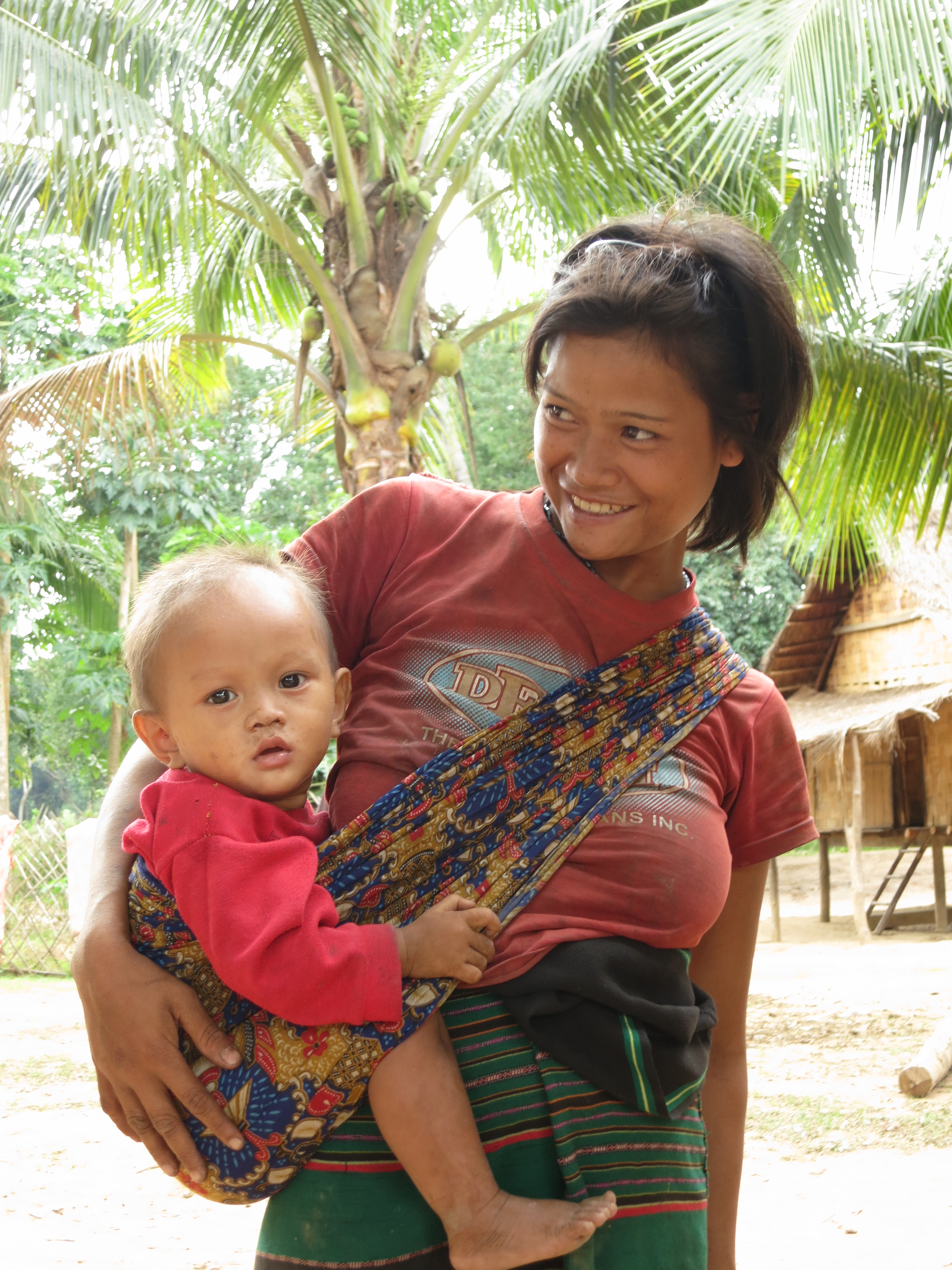
What do you see when you walk into the villages? Naked kids with runny noses. Mother with babies in slings. Bamboo and wood one-room dwellings on stilts. No electricity, not a single store. The people are still living as they have for centuries. They are forest people and foraging is still part of how they survive: rodents and roots supplement subsistence rice farming, which was introduced in the past decade.
The outside world is creeping in, however, due to a road connecting Thailand and Vietnam. Until 5 years ago the Tahoy people were completely isolated with little exposure to the outside world (except for the bombs the US rained on the area during the war with Vietnam)[1] The trip from the town of Salavan, 4 hours from the Thai border in southern Laos, took us 2-3 hours this week on the new road. It used to take 8-10 on treacherous, often impassable dirt terrain. Change is not all good: issues of human trafficking, HIV, and environmental degradation have already emerged. However, it is hoped that the road will also enable increased access to medicine and education.
Education and healthcare, in the case of birth, go hand in hand. Birthing is steeped in religious tradition, often with fatal consequences. Due to animist religious beliefs, women and girls give birth alone in the forest. However, if they give birth at the clinic, they can have the support of the nurses. Knowing that not all women can reach the clinic, the nurses and I agreed to initiate a “Safe Birth Outreach”. They will educate women and families: in the villages close to the clinic they will encourage birthing at the clinic; in the far away villages they will encourage women to get help.
The clinics will use the Clean Birth Kits to reinforce the message of the “Safe Birth Outreach”. The picture instructions show that the mother has a helper, who washes hands, uses the kit supplies, wraps the baby and immediately facilitates breastfeeding. The nurses have suggested adding receiving blankets, so I will begin accepting donations of gently used blankets to be used at the moment of birth.
CleanBirth.org will also develop illustrated posters to be hung in villages that caution against harmful behaviors in pregnancy (e.g. smoking), explain the warning signs of possible problems (e.g. pre-eclampsia) and show hygienic birthing practices using the Clean Birth Kits.
I learned so much from OV staff and the nurses. They told me what they need and we developed a plan to begin lowering maternal mortality in their villages.
A wonderful, productive trip. Now on to fundraising to make this happen…
[1] www.uxolao.org Laos is the most heavily bombed country in the world. During the Vietnam War, the US conducted a “Silent War” against Laos along the Ho Chi Minh Trail (HCMT). Tahoy was an important post on the HCMT. Unexploded ordinance continues to claim lives decades later. People blinded by Agent Orange inhabit the villages, carrying the physical and mental scars of war.
Theek, the Laotian Commotion says
What a great post! It’s so nice to read about the birth culture in my family’s homeland. what type of baby blankets are you seeking? I’d love to see if I can help.
Kristyn Zalota, Founder Cleanbirth.org says
Hi, Thanks so much for your comment and for following the blog. I am excited that you want to get involved!
The nurses would like basic receiving blankets. Something like this .
They don’t need to be new, just clean and unstained. You can mail them to: Kristyn Zalota 17 Post Ave. Westbrook, CT 06498. Thanks! Kristyn
Laura says
This is awesome. I was given so many receiving blankets, I couldn’t use them all. Now I can give them to a good cause!
Kristyn Zalota, Founder Cleanbirth.org says
Hurrah! Send them along and I will get them there! Thanks Laura.